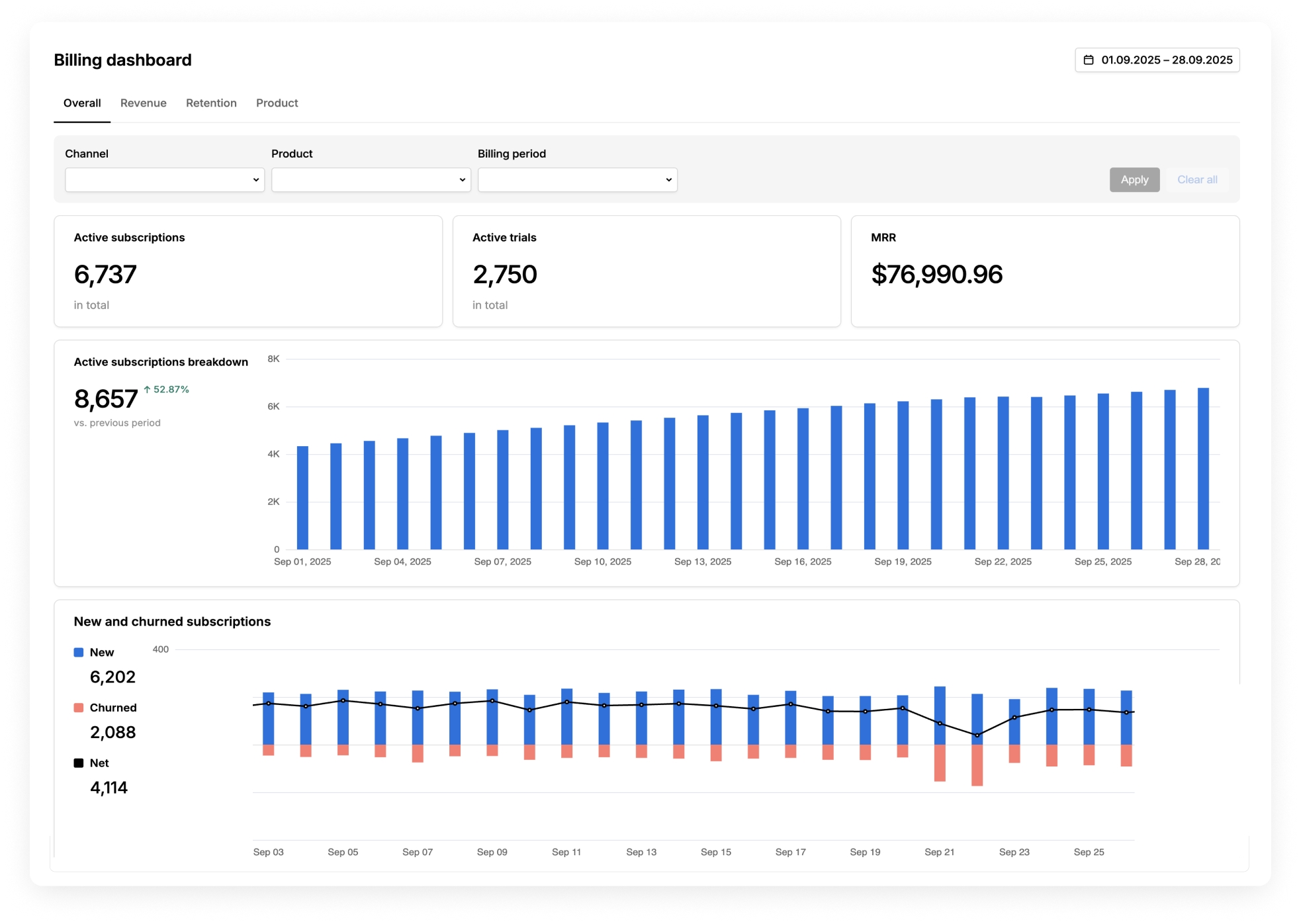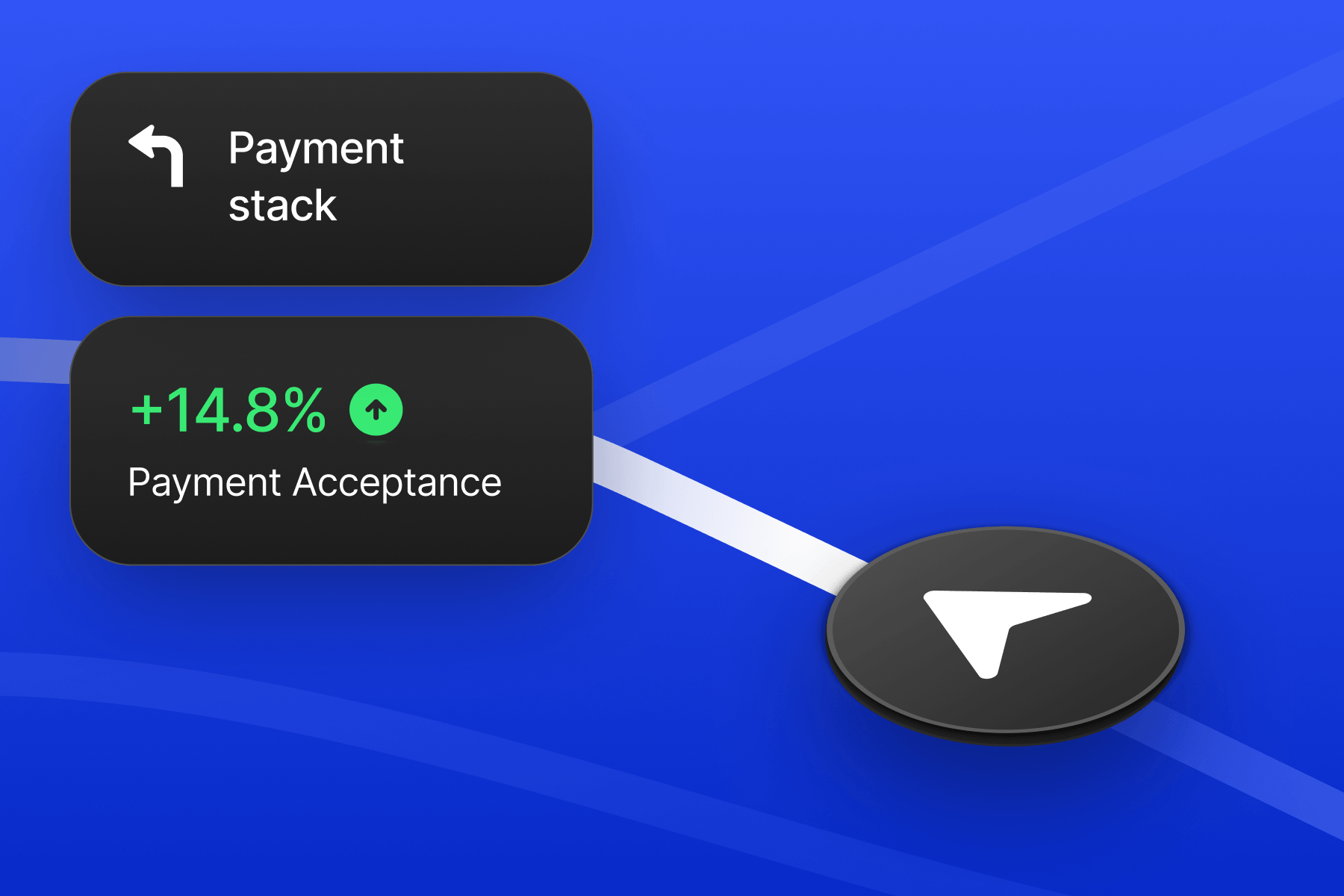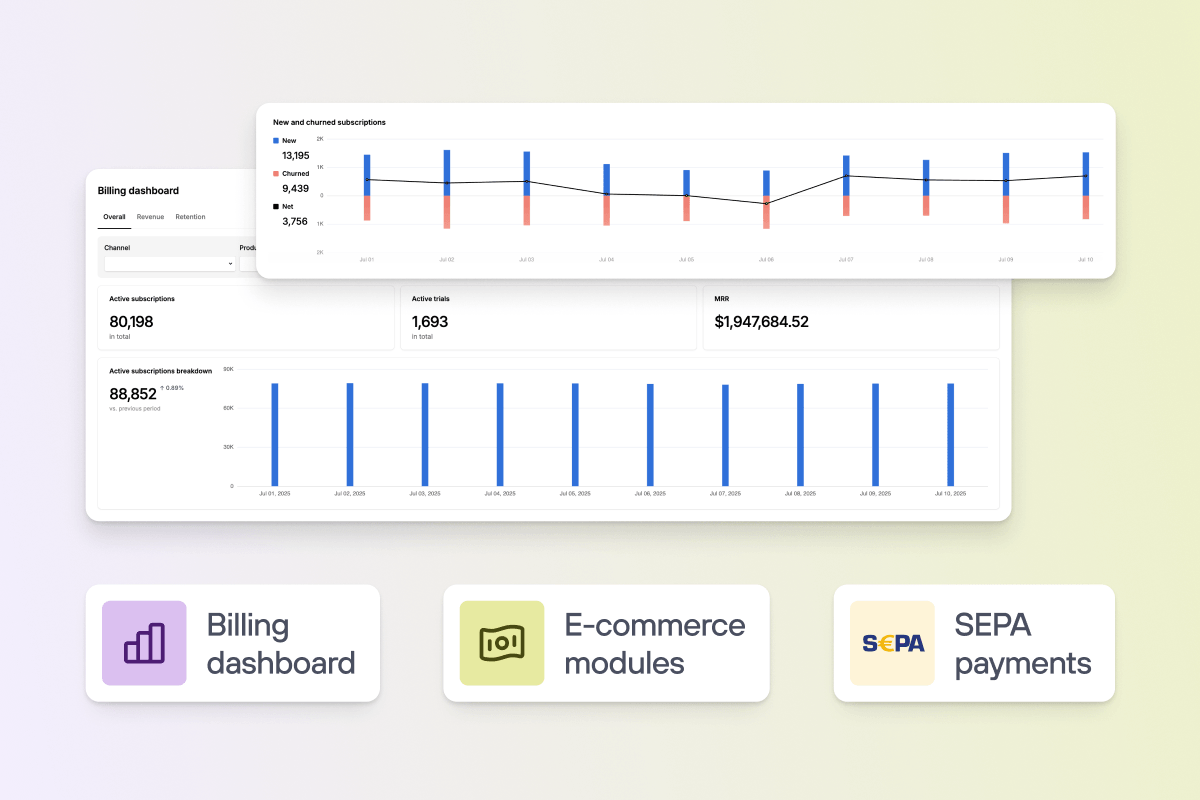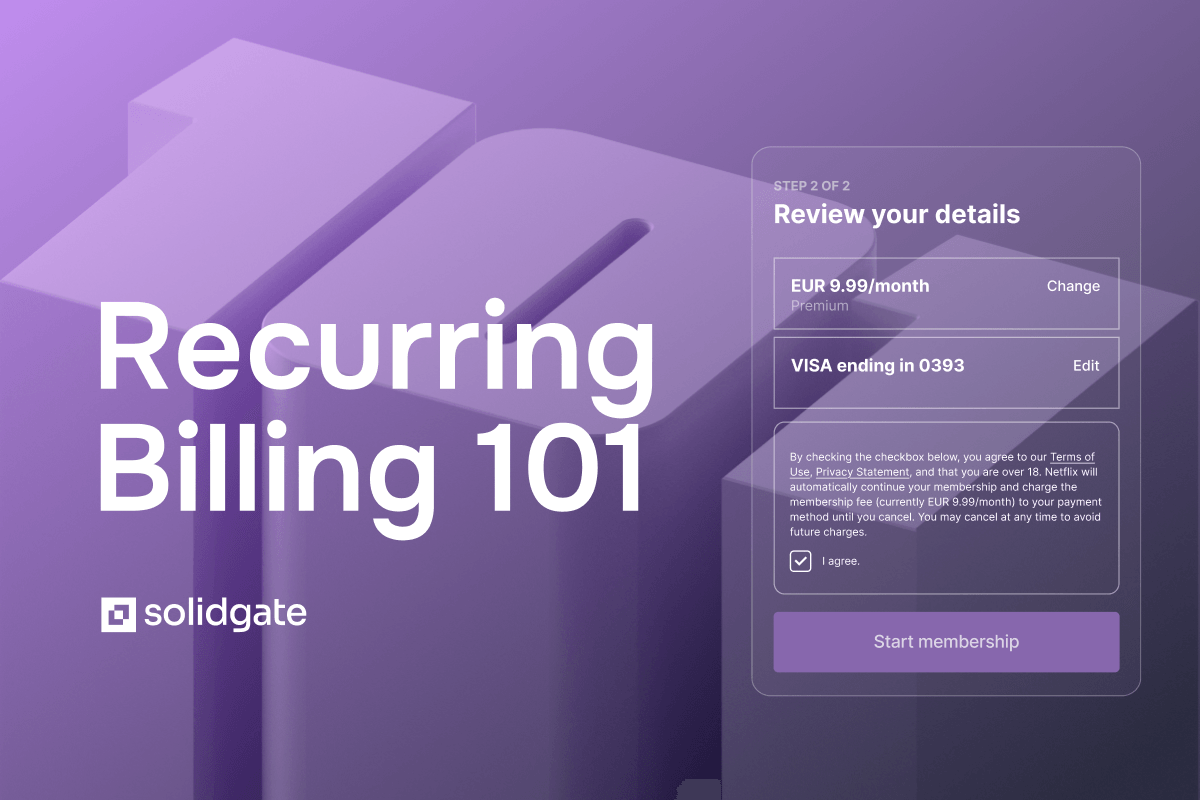The role of the payment orchestration layer in global subscription payments
Industry
19 Nov 2025
8 min

Scaling a global subscription business brings specific challenges. Learn how payment orchestration layer addresses them, helping improve payment performance, boost customer retention, and scale your payments globally.
When you begin selling in international markets, payments suddenly become much more complex. Dealing with recurring payments makes it even trickier, as each failed payment can increase involuntary churn.
When you go global, you must:
- Offer localized checkout to support high conversion rates
- Manage and authorization rates across regions
- Guarantee smooth payment renewals
- Handle the complexities of fraud prevention and regional tax laws, all at once.
Ultimately, the more regions you target and the higher your processing volume, the greater the ROI of a scalable, efficient payment infrastructure becomes.
This guide will walk you through the essentials of scaling payment processes globally for subscription businesses. We will focus on why a growing business should consider investing in a payment orchestration layer, and how we at Solidgate help businesses like yours.
What are the challenges of scaling subscription payments?
Once your team starts scaling into new markets, the limitations of relying on a single payment provider become very clear, especially once your transaction volume exceeds ~$300 000 a month.
Limited access to local payment methods
Launching in a new region requires adapting your checkout to local customers’ expectations.
Speed is key here. Growth teams want to launch in local markets as soon as possible to establish a presence before competitors – all without experiencing a decrease in conversions.
Unfortunately, depending on the market you target, the prevailing payment methods in it might fall outside your payment provider's scope. Building and maintaining separate integrations requires thousands of developer hours per integration, diverting resources from your core product.
As a result, conversion dips due to the lack of location-specific APMs, e-wallets, and native checkout pages.
Payment acceptance takes a hit
Healthy customer acquisition relies on having as many legitimate payments approved as possible. The fewer falsely declined payments you have, the better your bottom line is.
This is easy to achieve when you’re selling in your home market, but once you start scaling abroad, things change.
If you start selling globally without access to the local payment rails, you’ll quickly see your authorization rates fluctuate dramatically across regions.
For example, your acceptance rate might hover around 74% in the Netherlands, while showing a strong 85% in the US. For companies processing over $15-20M a year, these drops in acceptance will quickly show up on your balance sheets.
Rising operational costs as payment volumes grow
As your transaction volumes rise, so do the costs associated with handling payments. Costs typically grow due to:
- Higher per-transaction fees for cross-border payments
- Increased cost for declined transactions
- More manual reconciliation and operational work
- Reliance on expensive providers without the ability to negotiate fees
- Additional fraud and chargeback handling costs
- Managing payment declines
- Engineering time spent maintaining integrations
For businesses processing millions in annual payments, handling this without orchestration results in lost revenue of dozens or hundreds of thousands of dollars due to inefficiencies and rising costs.
What is the payment orchestration layer?
Modern demands complex coordination across multiple providers, payment methods, and geographic regions. As businesses expand globally, relying on a single gateway solution isn’t enough to sustain healthy conversion rates.
The challenge intensifies as businesses scale. A company starting with Stripe for card payments may add PayPal for wallets, SEPA for European bank transfers, and Alipay for Asian markets.
Each integration requires separate development work, distinct security implementations, and ongoing maintenance.
simplifies this process by providing a single point of contact to manage relationships with multiple gateways and providers.
Instead of building direct connections to each provider, businesses integrate once with the , which then handles all downstream provider communications.
Essential features of a modern payment orchestration layer
A payment orchestration layer essentially integrates your entire payment ecosystem into one platform. So, what are the main features to look for in a payment orchestration layer when selecting a solution for online businesses?
Here are the core features:
- Connection to multiple gateways: Simplifies integration with hundreds of payment providers worldwide, ensuring flexibility and access to local payment methods across regions.
- Dynamic payment routing: Automatically analyzes transaction data to route payments through the most optimal processing path, improving success rates and lowering transaction costs.
- Built-in security: Centralizes PCI DSS compliance and fraud prevention to consistently meet security standards across all payment providers, reducing risk across global markets.
- Real-time analytics: Provides unified, actionable data with real-time reporting across all payment providers, helping you optimize payment performance and adjust your strategy.
- Automated compliance management: Simplifies the handling of regulatory requirements by automatically adjusting for different payment methods and jurisdictions.
These features work together to create a flexible, secure, and scalable payment infrastructure that adapts to the needs of growing global businesses.
Top benefits of the payment orchestration layer for subscription businesses
The success for subscription-based businesses lies in strong acquisition, retention, and expansion. Here’s how payment orchestration helps with all three.
Localized checkout for higher conversions
Orchestration allows you to customize your checkout based on customers’ IP addresses. You can offer customers from different regions their preferred payment methods and card brands by quickly adding and testing them in your checkout. In the US, it’s PayPal; in Brazil, it’s SmartPix; in Poland, it’s BLIK; in China, it’s AliPay, and so on.
You won't have to spend months building integrations from scratch, as you would without orchestration. Adding new payment methods this way takes days, at most weeks, requiring minimal development efforts from your side.
This speeds up your time-to-market, allowing you to test checkout performance and adjust your strategy on the go.
Increase in payment acceptance (fewer declines)
Here’s how implementing a payment orchestration layer can improve transaction approval rates and reduce payment failures:
- Instant integration with local payment railsOrchestration lets you process payments like a local from day one in almost any target region. You can add multiple Tier-1 acquirers and payment methods that your customers and local banks already trust. When payments stay local instead of going through a foreign processor, approval rates go up.
- Dynamic routing & failoverYou can easily set up customized payment routing rules that direct payments to acquirers most likely to approve them in a given region. If the chosen provider declines or fails to process the transaction, failovers automatically re-route the payment to an alternative provider.If a soft decline occurs, smart retry logic helps recover as many sales as possible by intelligently retrying payments at the best times. Most Solidgate merchants report an immediate 2–4% increase in authorization rates after implementing orchestration.

Routing customization in Solidgate Hub.
- Adaptive fraud managementOrchestration providers integrate fraud detection engines, adaptive 3-D Secure authentication flows, , chargeback prevention, and risk scoring. This allows you to protect your revenue and reputation while still approving as many legitimate transactions as possible.High-risk cards trigger a 3DS flow for extra verification, while trusted customers can pay in one click.

- VTES/MDES tokenizationinherently carry lower fraud risk and have greater trust from issuers, leading to fewer false declines. Our clients in customer subscription services see up to a 15% increase in payment acceptance after rolling out network tokens for all card-on-file transactions.
Higher user LTV
Based on our of 1200 subscription businesses, they lose up to 9% of customers each month to involuntary churn caused by failed payments.
Beyond false fraud signals, many s fail because card data changes over time:
- The card may have been reissued due to upgrades or theft
- The original card has expired
- The cardholder’s account was closed or upgraded
- The customer’s name or billing address changed
Credit card tokenization provides that automatically update customers’ new card data. This prevents many recurring payment failures and has delivered up to a 7.5% increase in retention for some merchants.
Cost-efficient processing fees
Exposure to a single vendor
provides little room for cost control or negotiation. Payment providers offer different rates depending on transaction types, volumes, geography, and even market conditions, which can shift over time.
Subscription payment orchestration helps optimize processing costs by automatically analyzing fee structures across connected providers and routing transactions to the most cost-effective options.
For high-volume merchants, even a 1% reduction in processing fees can lead to hundreds of thousands of $ saved each year.
Unified analytics across providers and products
As you scale and the number of your payment providers and subscription products grows, it becomes harder to tie it all together and track performance accurately.
Orchestration unites all your payment flows and, subsequently, data, under one roof, which is invaluable for extracting actionable insights quickly.
You have dashboards that show your payment performance, fraud rates, and disputes across multiple cards, payment providers, and APMs. On top of it, you can dive into your key subscription KPIs, including Active subscriptions, Trials, MRR, Churn, and much more.
All those metrics are directly tied to your payment stack and provide accurate, relevant data for making strategic decisions – like pivoting or doubling down on certain products.

Simplified operations
From an operational standpoint, managing recurring payments on a global scale is a handful. Teams lose hundreds of hours reconciling payments across providers, managing chargebacks, finetuning payment routes, and putting together reports.
How does a payment orchestration layer reduce operational complexity for enterprises? In short, it helps automate key processes – routing, reporting, reconciliation, and even chargeback management in some cases.
Instead of juggling different tools or vendors, you use one that handles it all. This saves teams hours, cuts down on errors, frees up time to focus on the core product, and speeds up transaction processing.
Value-add tools that future-proof subscription growth
Modern payment orchestration platforms are built with growth in mind. They offer a range of built-in value-add features you can use without adding external vendors or integrations.
Those features vary across providers, as each orchestrator focuses on a specific customer profile and their needs.
With the majority of Solidgate clients operating a subscription model, we focused on delivering value where it matters most for global subscriptions:
- Subscription billing engine that includes trials, renewals, billing calendars, smart dunning, split payments, and account updater
- Early chargeback prevention alerts and logic for proactive dispute resolution
- AI-powered dispute representment with automatic evidence generation and submission to easily recover revenue lost to chargebacks
- A tax compliance layer that automatically calculates and reports tax based on location and transaction type
- An antifraud engine that enables secure transactions while detecting and preventing fraud threats across multiple acquiring channels
All of these are available within the same platform and dashboard.
Scaling your subscription business with a payment orchestration layer
Global subscriptions face very specific payment challenges:
- Adapting to local payment preferences
- Managing transaction declines and authorization rates
- Managing recurring payments
- Staying compliant with regional laws
It's a lot to manage, particularly if your payment infrastructure isn't optimized for growth
Payment orchestration layer simplifies these complexities by streamlining your payment processes and making them more efficient. By centralizing everything on a single platform, you can ensure smooth transactions, higher approval rates, and better customer retention, while keeping costs in check and reducing fraud risk.
At , our payment orchestration platform is built to support the growth of subscription businesses.
If you’re looking to expand your payment options, improve payment acceptance, and simplify operations, – we’ll be happy to show you how it works.
Frequently asked questions
A payment orchestration layer simplifies the management of multiple payment gateways by offering a single integration point to connect to various providers. This reduces the complexity of development, accelerates market expansion, optimizes transaction costs through intelligent routing, and improves payment success rates with automated failover capabilities.
Payment orchestration layers simplify PCI compliance by taking over the heavy lifting of data security. Instead of handling sensitive card details yourself, the system tokenizes the information, replacing it with secure tokens. This way, your business only deals with tokens, not actual credit card numbers. Essentially, the orchestration layer reduces the scope of PCI DSS compliance because it centralizes all sensitive data handling in one place, making it easier to meet security requirements.
There are a few key areas where you can save money with an orchestration layer. First, it cuts down on development costs. Instead of building out individual integrations with each payment provider, you only need to integrate once with the orchestration layer.
Then, it helps with transaction fees. The layer routes payments to the most cost-effective processors, which means you're not overpaying for transactions.
You’ll also see fewer payment declines, thanks to intelligent payment routing and , improving your authorization rates.
Plus, it integrates fraud detection, which means fewer chargebacks and manual handling, saving on those costs too. On top of that, it reduces operational overhead by automating tasks like reporting, reconciliation, and fraud prevention, letting your team focus on more strategic activities.
Payment orchestration layers can be particularly useful for subscription businesses. They help manage recurring payments more efficiently, reduce churn, and ensure payments are processed smoothly, which can improve overall customer retention.
For e-commerce businesses, especially those with a global presence, orchestration simplifies the integration of different payment methods, reduces declines, and enhances the overall checkout experience. This makes it easier to manage payments across regions without the complexity of multiple integrations.
Enterprises scaling internationally can also benefit from orchestration, as it connects to a wide range of providers and payment methods. This simplifies cross-border payment processing and reduces the need for separate integrations in each region.
Finally, businesses dealing with high transaction volumes or operating in regulated industries can leverage orchestration to streamline fraud detection, compliance, and reporting, reducing risks and improving operational efficiency.
Payment orchestration layers enhance payment success rates by using intelligent routing to direct transactions to the most reliable gateways. In the event of a failure, the system automatically switches to backup providers. Real-time monitoring detects potential issues early, and retry logic ensures that failed payments are reattempted through alternative providers, reducing friction for customers.
A payment orchestration layer strengthens security by centralizing compliance management across all connected gateways. It applies consistent security protocols across multiple providers, reduces the number of direct integrations that need separate security management, and offers unified fraud detection capabilities. As new gateways are added, security standards are maintained consistently.
Recent articles









